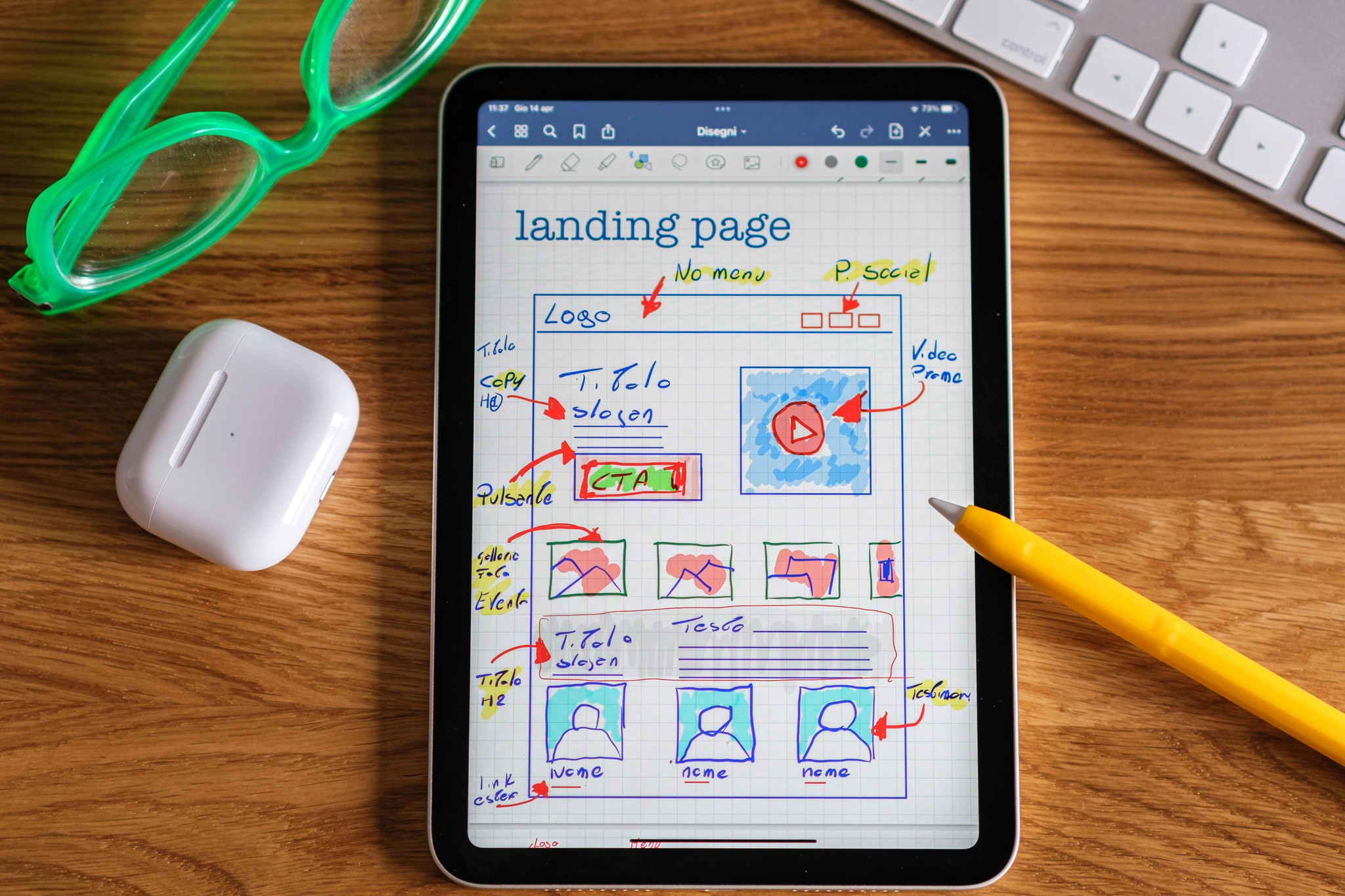Marketing and Growth
Landing Page Optimizations for Better Ad Conversions
May 11, 2024

Anil Bains
Founder and CEO
Why Optimize the Landing Pages of Camapaigns
Have you ever poured your heart into an ad campaign, only to see a trickle of conversions on your landing page? You're not alone. Landing pages, designed to capture leads and drive sales, can often fall flat. But fear not, landing page optimization (LPO) is here to bridge the gap. Strategically refining your page's content, design, and user experience, can turn those clicks into conversions. In this blog, we'll delve into the world of LPO, exploring essential techniques, mobile-specific considerations, compelling content creation strategies, and even some advanced tactics to increase your landing page conversions.
Key Takeaways
While they may be the least popular type of signup form, landing pages boast the highest conversion rate at a staggering 23%.
Pages loading in just one second convert a whopping 3x higher than those taking five seconds.
Addressing buyer fears on your landing pages can skyrocket conversion rates by an impressive 80%.
Contents
What is a landing page and why is it important?
Why should you optimize your landing page?
What are some basic optimization tips to keep in mind?
How can you optimize your landing page for mobile users?
How can you craft content for conversions?
What are some advanced optimization techniques that can be used?
Case Study: The Airbnb Landing Page
FAQs
What is a landing page and why is it important?
A landing page is a separate web page designed expressly for a marketing or advertising campaign. It is where a visitor "lands" after clicking on a link in an email or ad from Google, Bing, YouTube, Facebook, Instagram, Twitter, or other similar websites.
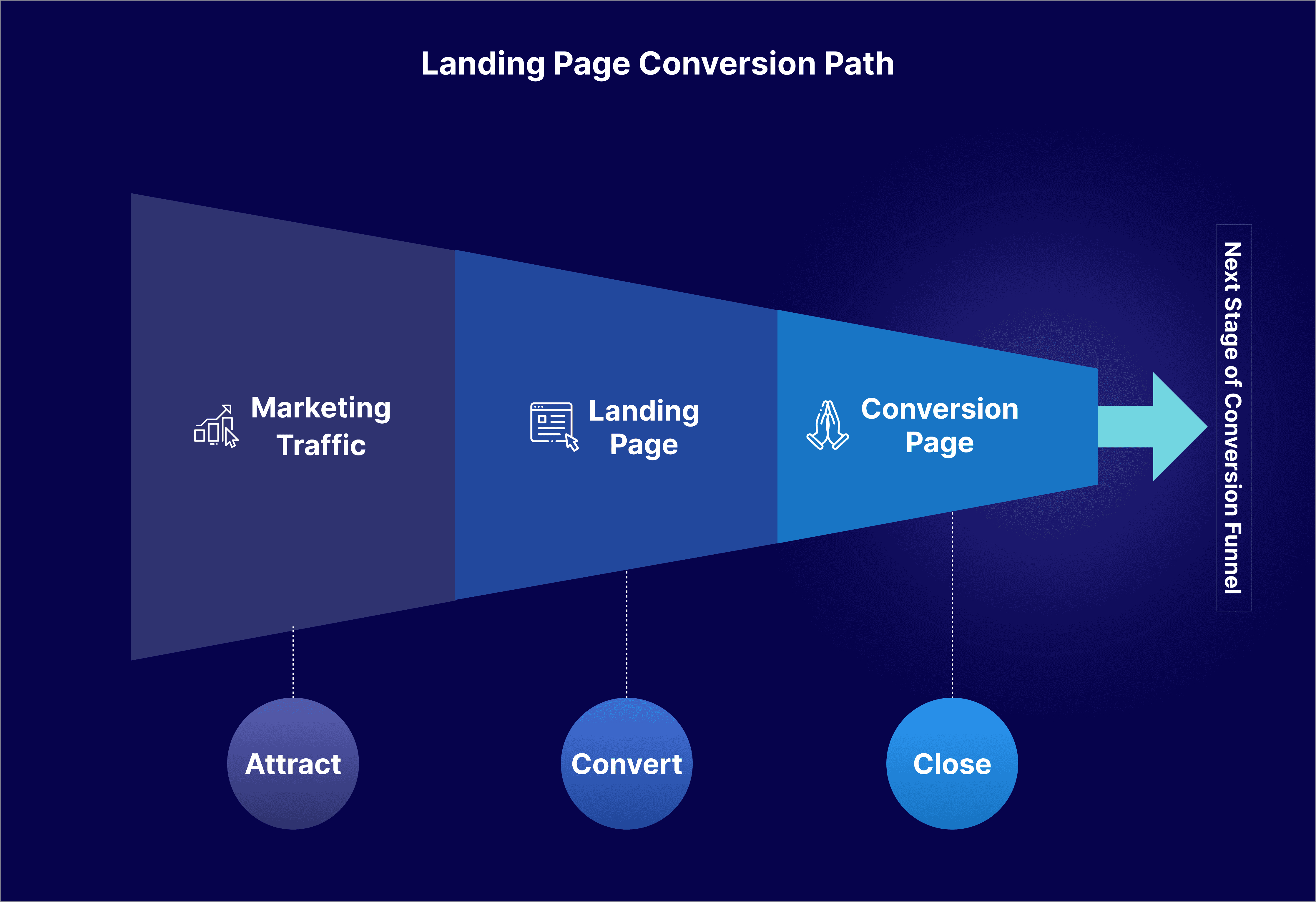
Figure 1. Landing Page Conversion Path
Unlike web pages, which often have multiple objectives and promote inquiry, landing pages have a single emphasis or goal, known as a call to action (or CTA).
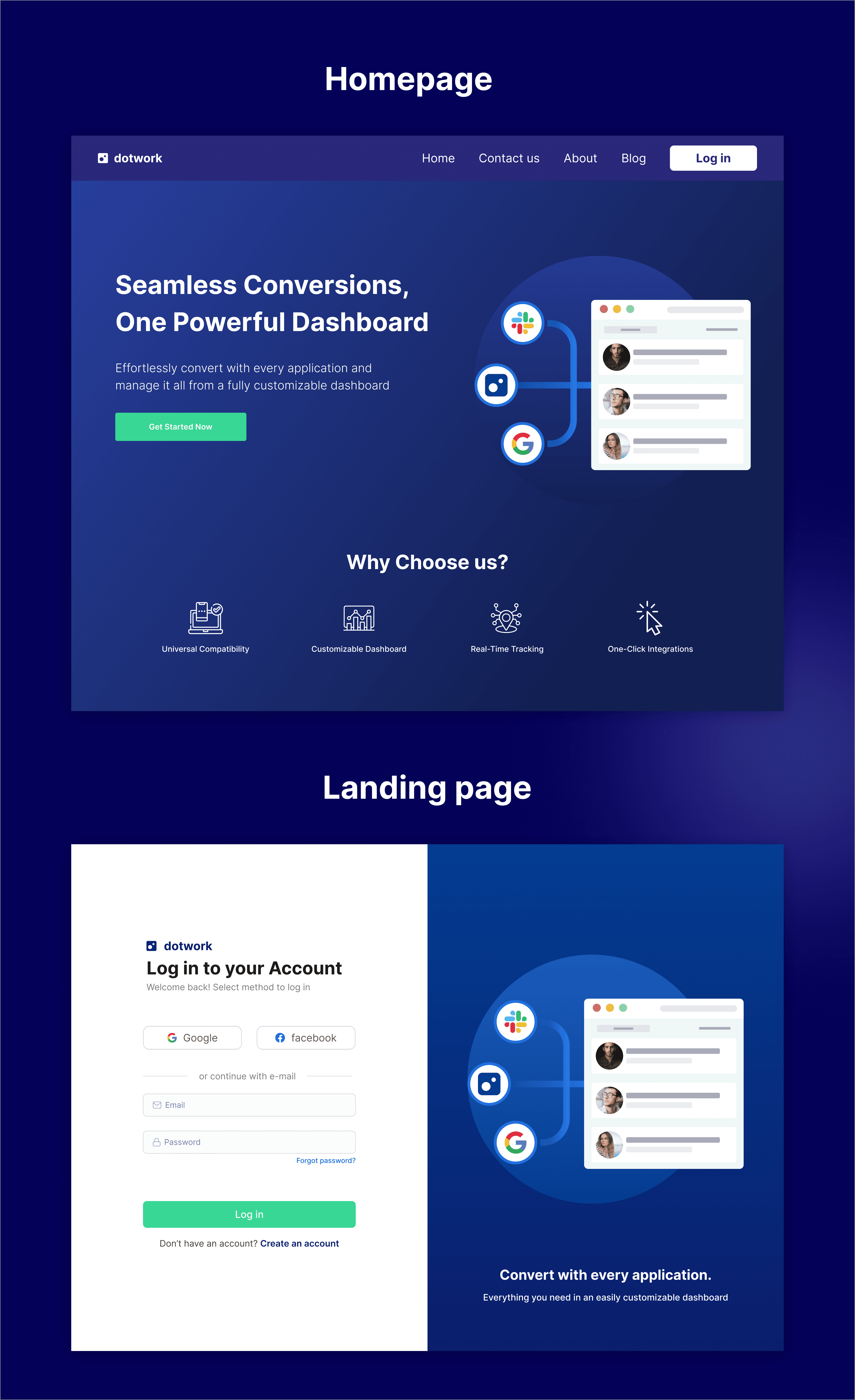
Figure 2. Homepage vs Landing Page
With the majority of marketers prioritizing lead generation (43.6%) and direct customer purchases (33.7%) as their primary goals (HubSpot), landing pages have become a valuable tool for achieving these objectives. By focusing on landing pages, marketers can significantly improve the conversion rates of their marketing campaigns, ultimately reducing the costs associated with lead or sale acquisition. This is because landing pages are specifically designed to cater to the needs of a targeted audience, providing a tailored experience that resonates with their interests and preferences. Landing pages also allow you to track user behavior and measure the effectiveness of your campaigns.
[Image: Marketing Objectives on a Landing Page ]
Why should you optimize your landing page?
Higher Conversion Rates: The average landing page conversion rate across all industries is 5.89% (HubSpot). Striving for this mark ensures that your landing pages turn visitors into leads or paying customers.
Improved User Experience: A landing page optimized for clarity and ease of use provides a positive user experience. Visitors can quickly grasp your value proposition and seamlessly take the desired action, fostering trust and brand loyalty.
Reduced Bounce Rates: Landing pages with distractions or irrelevant information can lead to high bounce rates (users leaving the page immediately). Optimizing your landing page keeps visitors engaged, reduces bounce rates, and gives you a better chance to convert them.
What are some basic optimization tips to keep in mind?
Aligning Landing Page with Ad Message:
Cohesive Messaging: Ensure a seamless ad and landing page connection.
Matching Value Propositions: The promises made in your ad (e.g., "Free Trial," "20% Discount") should be prominently displayed on your landing page.
Keyword Consistency: Use relevant keywords from your ad throughout the landing page. This reinforces the user's search intent and builds trust.
Visual Continuity: If your ad features an image of a specific product, ensure the product is prominently displayed on the landing page.
Visual Appeal:
High-Quality Images & Videos: Use professional-looking visuals relevant to your product or service.
Color Scheme & Branding: Maintain a consistent color scheme and branding elements in alignment with your overall brand identity.
Relevance is Key: The visuals on your landing page should directly relate to your offer. Don't use generic stock photos without connections to your product or service.
Simplicity is King: Avoid cluttered layouts or overwhelming visuals. Keep your design clean and user-friendly, allowing visitors to focus on your message.
Clarity:
Clear Headline: Your headline should be concise, benefit-driven, and instantly grab the user's attention. Landing pages with strong headlines can experience a conversion rate increase.
Simple & Scannable Content: Keep your content easy to understand. Use bullet points, short paragraphs, and clear calls to action (CTAs).
Focused on One Goal: Avoid cluttering your landing page with too much information. Focus on achieving one specific conversion goal (e.g., sign-up, purchase).
You can create landing pages that efficiently convert clicks into leads or sales through these basic optimizations. A well-optimized landing page acts as a bridge between your ad and your conversion goal.
How can you optimize your landing page for mobile users?
Mobile accounts for over half (54.8%) of all website traffic worldwide (Statista). This emphasizes the sheer volume of mobile devices accessing your landing page.
Hence ensure the landing page is mobile user-friendly by keeping in mind the following points:
Fast Loading Times: Mobile users anticipate quickness. Aim for a load time of two seconds or less. Mobile landing pages that load in 5 seconds or fewer have longer average sessions (Google).
Prioritize Above-the-Fold Content: 80% of mobile users look at the top of the page. According to a study by Google and Ipsos, 40% of mobile searchers use click-to-call in search to talk to a real person as the primary motivation, highlighting the importance of ensuring key elements such as call-to-action and primary message are prominently displayed above the fold.
Responsive Design: Ensure your landing page utilizes responsive design principles. This means the layout automatically adjusts to fit the device's screen size, providing an optimal viewing experience on desktops, tablets, and smartphones.
Simple Navigation: Keep your landing page navigation simple and easy to use on a mobile device. Avoid complex menus or dropdown lists. Consider using hamburger menus or clear icons for navigation elements.
How can you craft content for conversions?
Clear Calls to Action (CTAs):
Action-Oriented Language: Use strong verbs that tell users exactly what you want them to do. Examples include "Buy Now," "Download Now," "Sign Up Today," or "Get Started."
Prominent Placement: Position your CTA button prominently on your landing page. It should be visually distinct and easy to find. Consider using contrasting colors or placing it above the fold (visible without scrolling).
Social Proof and Trust Signals:
Customer Testimonials: Showcase positive testimonials from satisfied customers. User quotes praising your product or service build trust and social proof, influencing visitors' perceptions.
Client Logos: If you have established partnerships or work with reputable brands, display their logos on your landing page. This association with trusted names reinforces credibility and fosters confidence.
Trust Badges & Certifications: Display trust badges or security certificates relevant to your industry. This demonstrates your commitment to data security and user privacy, especially if your landing page involves sensitive information collection.
Reviews & Ratings: Including positive reviews and ratings from trusted platforms can significantly enhance trust and encourage conversions.
Benefit-Driven Headlines:
Focus on User Needs Craft headlines that address your target audience's pain points or desires. Highlight how your product or service solves their problems or fulfills their needs.
Quantifiable Benefits: Whenever possible, quantify the benefits your offering provides. For example, "Increase Sales by 20%" or "Save Time with Our Automated Solution."
Clear & Concise: Keep your headlines concise and easy to understand. Aim to grab attention quickly and communicate the core value proposition within seconds.
Keywords: While prioritizing clarity, consider incorporating relevant keywords to improve search engine visibility for organic traffic.
What are some advanced optimization techniques that can be used?
A/B Testing: A/B testing allows you to compare different variations of your landing page elements (headlines, CTAs, layouts, etc.) against a control version. This data-driven approach reveals which variations resonate best with your audience, leading to higher conversions.
Leveraging Heatmaps and Analytics:
Heatmaps: These visual representations reveal where users click, scroll, and focus their attention on your landing page. This valuable data helps you identify areas of confusion, low engagement, or missed opportunities.
Website Analytics: Platforms like Google Analytics provide a wealth of data on user behavior, including time spent on the page, bounce rates, and conversion rates. Analyzing this data helps you understand user journeys and identify areas for improvement.
Urgency Tactics: Scarcity and limited-time offers can create a sense of urgency, encouraging users to act before the opportunity disappears. This tactic can be effective in driving conversions.
Case Study: The Airbnb Landing Page
Airbnb's landing page is a masterclass in effective design and optimization. Here's a breakdown of what makes it so successful:
Desktop Version:
Clear Value Proposition: The page communicates Airbnb's value proposition clearly: providing a platform for people to find unique and affordable accommodations. This is achieved through a prominent headline and concise copy immediately conveying the platform's benefits.
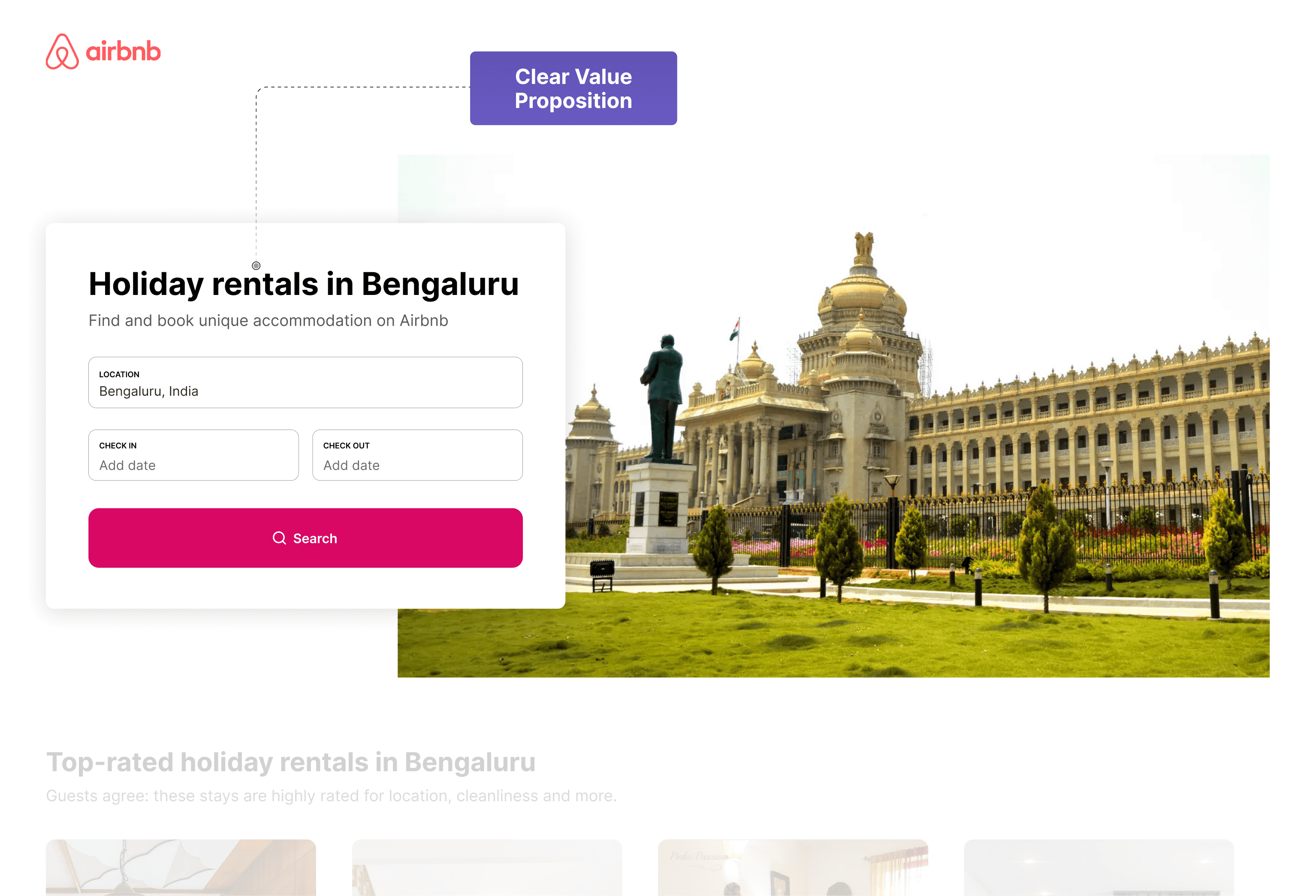
Figure 3. AirBnB Landing Page Value Proposition
Simple and Intuitive Design: The design is clean, minimalistic, and easy to navigate. The whitespace and subtle design elements create a sense of calm and focus, allowing users to easily find what they're looking for.

Figure 4. Simple and Intuitive Design Elements
Prominent Call-to-Action: The call-to-action (CTA) is prominently displayed at the top of the page, making it easy for users to take the desired action. The CTA is also designed to stand out, with a bright color and clear typography.
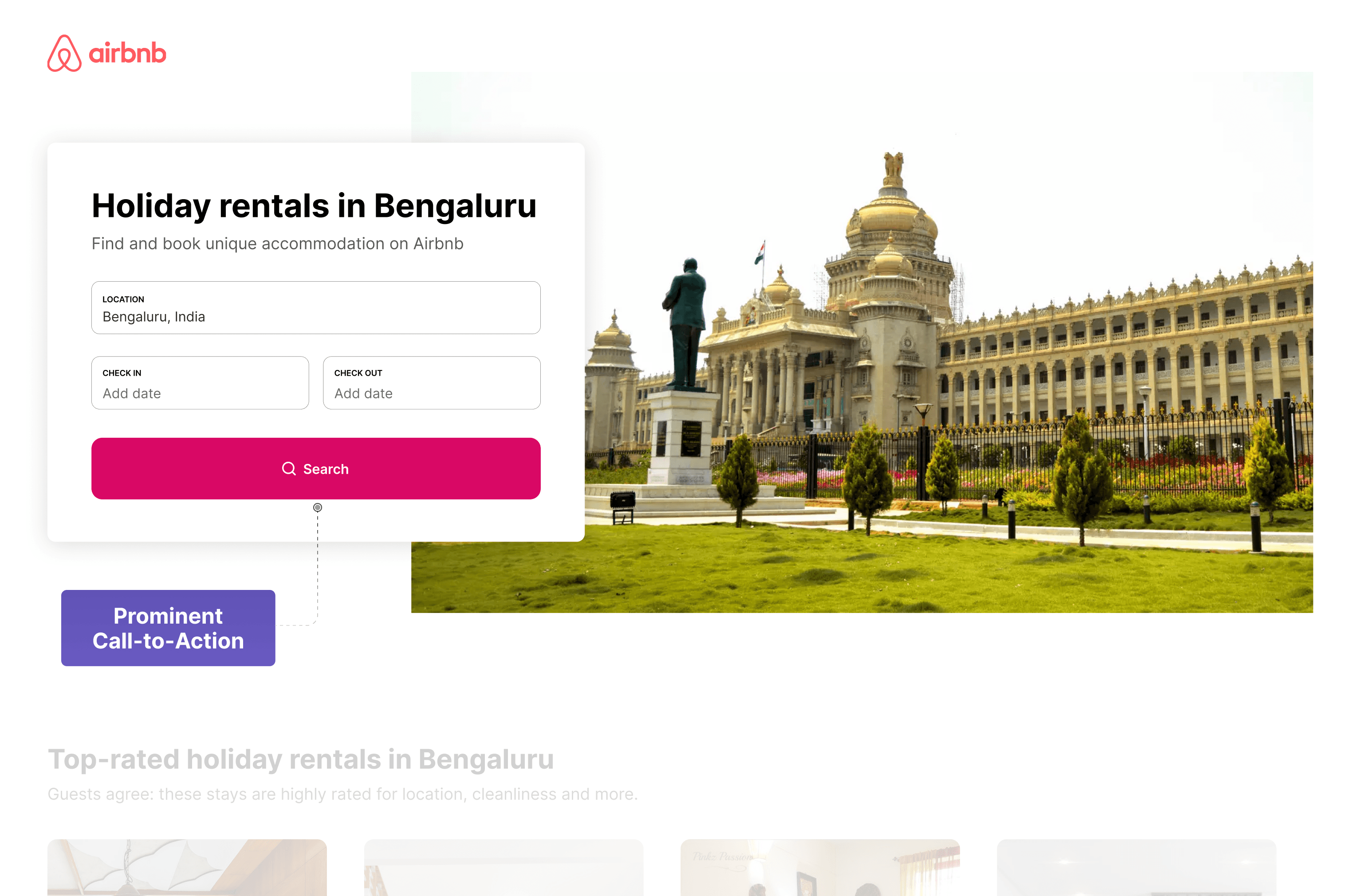
Figure 3. AirBnB Landing Page Prominent CTA
Relevant Images: Using high-quality images of various accommodations helps to showcase the diversity of options available on the platform. These images are carefully curated to highlight a property's unique features and amenities.
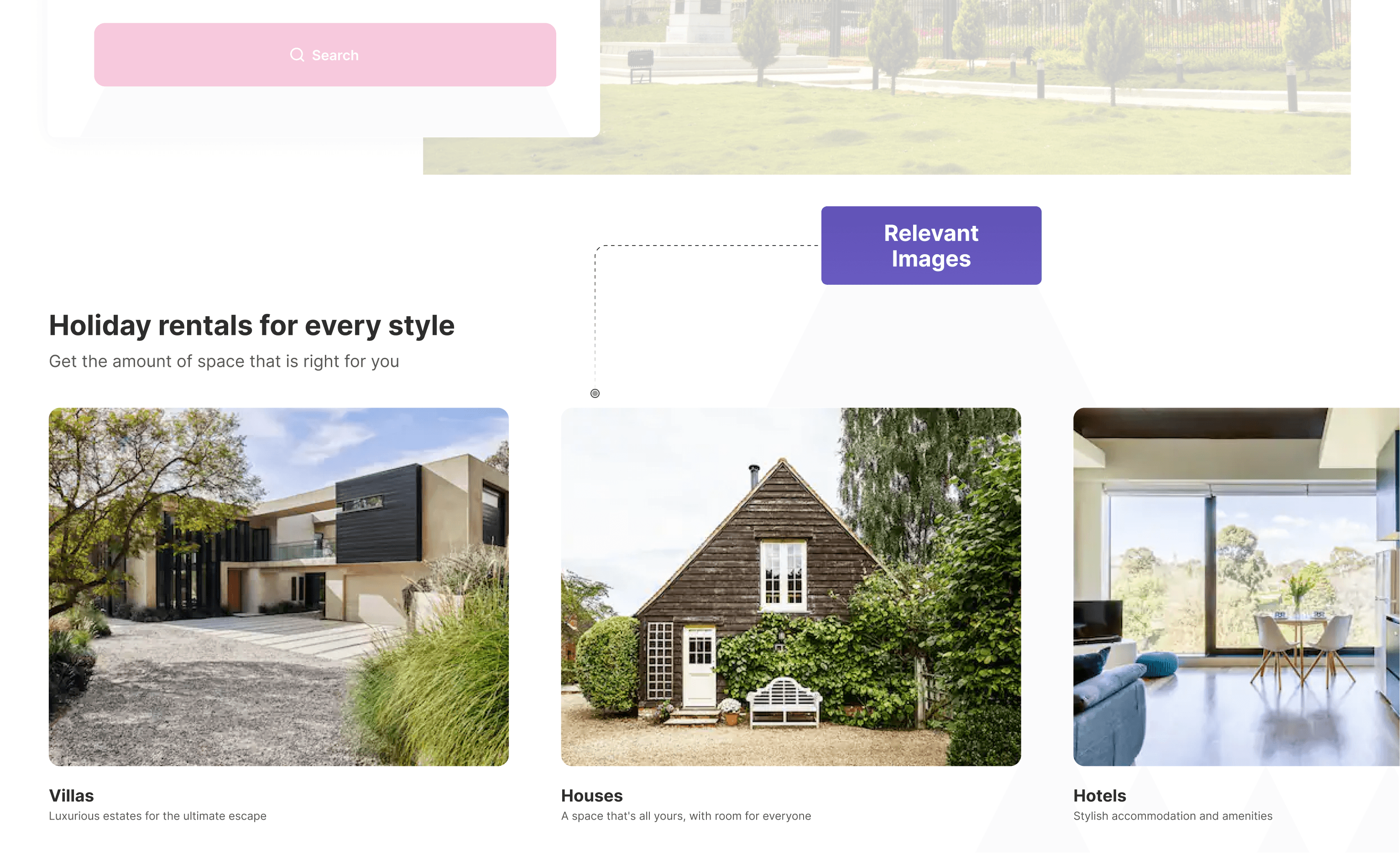
Figure 4. AirBnB Landing Page's Use of Relevant Images
Social Proof: The page includes testimonials and reviews from satisfied customers, which helps to build trust and credibility with potential users. These testimonials are displayed prominently, making it easy for users to see what others say about their experiences on the platform.
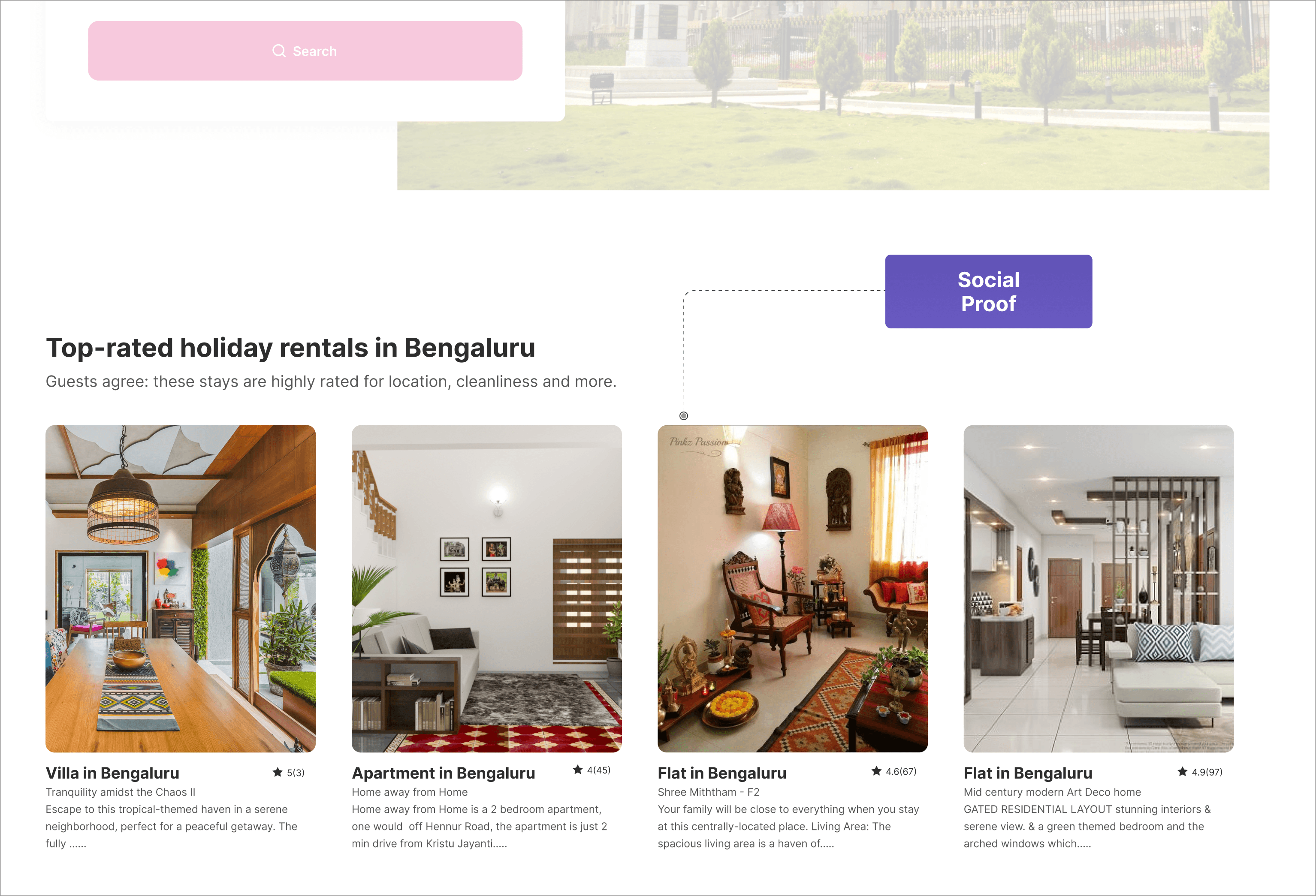
Figure 5. AirBnB Landing Page's Use of Social Proof
Fast Loading Speed: The page loads quickly, which is crucial for user experience and conversion rates. A slow-loading page can lead to frustration and abandonment, so Airbnb's fast loading speed is a key factor in its success.
Mobile Version:
Streamlined Design: The mobile version's streamlined design is optimized for smaller screens. The layout is carefully crafted to prioritize the most important content and make it easy for users to find interesting properties.
Prioritized Content: The most important content is prioritized, with the call-to-action and search bar prominently displayed at the top of the page. Users can quickly find what they're looking for and take action.
Easy Navigation: The simplified navigation menu seamlessly guides users to the different types of accommodations on the platform. The menu is also designed to be easily accessible, with clear labels and intuitive navigation.
High-Quality Images: The high-quality images of various accommodations help showcase the diversity of options available on the platform. These carefully curated images highlight the unique features and amenities of each property.
Fast Loading Speed: The page loads fast which is crucial for user experience and conversion rates. A slow-loading page can lead to frustration and abandonment, so Airbnb's fast loading speed is a key factor in its success.
Landing pages are the workhorses of your marketing campaigns, but without proper optimization, they can leave your conversion rate sputtering. This blog has equipped you with the knowledge to transform those pages into lead-generating machines. Remember, LPO is an ongoing process. By consistently testing, refining, and implementing advanced tactics, you can turn clicks into conversions and watch your landing pages become champions in the race for customer acquisition.
FAQs
Q. What are some key mobile optimization tips?
Optimize Images: Compress image files to reduce their size without sacrificing quality. Tools like TinyPNG or ShortPixel can help.
Minimize Code: Remove unnecessary code, including HTML, CSS, and JavaScript, to streamline page load times.
Leverage Browser Caching: Enable browser caching to store frequently accessed elements like images and scripts locally on user devices, reducing the need to download them again on subsequent visits.
Consider Accelerated Mobile Pages (AMP): For time-sensitive campaigns or situations where speed is paramount explore AMP. AMP creates stripped-down versions of your pages specifically designed for mobile users, prioritizing essential content and functionality for blazing-fast load times.
Large, Clear Buttons: Make it easy for users to tap CTAs (call to action) buttons with their fingers. Aim for a minimum tappable area of 48 x 48 pixels.
Simple Forms: Minimize the number of form fields and use clear, concise labels. Consider auto-filling features for user convenience.
Prioritize Clickable Elements: Ensure all clickable elements like buttons and links are spaced adequately to avoid accidental taps on nearby elements.
Q. Is there a checklist I should follow for landing page optimization?
This checklist will guide you through optimizing your landing pages for maximum conversions, turning clicks into leads and sales:
Pre-Launch Optimization:
Target Audience: Clearly define your ideal customer for this landing page.
Offer Alignment: Ensure your landing page offer aligns perfectly with the ad or campaign that drives users to it.
Value Proposition: Craft a compelling headline and sub-headline that communicates the value proposition and grabs attention.
Clear Goals: Establish concrete goals for your landing page, such as lead capture, product sales, or event registrations.
Content and Design:
Compelling Copy: Write clear, concise, and persuasive copy that speaks directly to your target audience's needs and pain points.
Benefits-focused: Highlight the benefits your offer provides, not just features.
Visual Appeal: Use high-quality, relevant images and videos to enhance user engagement.
Mobile Responsiveness: Ensure your landing page layout and elements adapt seamlessly for optimal viewing and interaction on mobile devices.
Fast Loading Speed: Optimize page speed for a smooth user experience on all devices.
Scannable Format: Break up text with bullet points, headings, and white space for easy readability.
Social Proof: Include testimonials, case studies, or trust badges to build credibility and social proof.
SEO Optimization: Incorporate relevant keywords naturally throughout your landing page content to improve organic search visibility.
Lead Capture and Conversion:
Clear Call to Action (CTA): Make your CTA prominent, actionable, and benefit-oriented.
Frictionless Forms: Keep forms short and require only essential information for lead capture.
Error Handling: Implement clear error messages for form submissions to guide users towards successful completion.
Thank You Pages: Create a dedicated thank you page that confirms user actions and potentially offers additional resources or next steps.
Q. What are some popular landing page optimization tools?
There are many landing page optimization tools available, a few popular options to consider are:
Landing Page Builders:
Unbounce: A user-friendly platform with drag-and-drop functionality for creating high-converting landing pages without coding knowledge. Offers A/B testing and analytics features.
Instapage: Another popular drag-and-drop builder known for its clean interface, fast loading speeds, and integrations with marketing automation tools.
Leadpages: A versatile tool that allows you to create landing pages, pop-up forms, and alert bars. Offers a good balance of features and affordability.
A/B Testing and Optimization Tools:
Optimizely: A comprehensive platform for running A/B tests, heatmaps, and website personalization. Offers advanced features for optimizing the entire customer journey.
Google Optimize: A free tool by Google that allows you to run A/B tests on landing pages and other website elements. Easy to integrate with Google Analytics for data analysis.
Crazy Egg: Specializes in heatmaps and user behavior tracking. Provides valuable insights into how visitors interact with your landing page elements, helping you optimize for user flow and conversions.
Analytics and Conversion Tracking Tools:
Google Analytics: A free and powerful analytics platform that tracks website traffic, user behavior, and conversions. Integrates seamlessly with other Google marketing tools.
Hotjar: Offers a combination of heatmaps, session recordings, and form analytics to provide in-depth insights into user behavior on your landing pages.
Clicktale: Another user behavior analytics tool with features like session recordings, form analytics, and attention maps to understand how users navigate your landing pages.
Why Optimize the Landing Pages of Camapaigns
Have you ever poured your heart into an ad campaign, only to see a trickle of conversions on your landing page? You're not alone. Landing pages, designed to capture leads and drive sales, can often fall flat. But fear not, landing page optimization (LPO) is here to bridge the gap. Strategically refining your page's content, design, and user experience, can turn those clicks into conversions. In this blog, we'll delve into the world of LPO, exploring essential techniques, mobile-specific considerations, compelling content creation strategies, and even some advanced tactics to increase your landing page conversions.
Key Takeaways
While they may be the least popular type of signup form, landing pages boast the highest conversion rate at a staggering 23%.
Pages loading in just one second convert a whopping 3x higher than those taking five seconds.
Addressing buyer fears on your landing pages can skyrocket conversion rates by an impressive 80%.
Contents
What is a landing page and why is it important?
Why should you optimize your landing page?
What are some basic optimization tips to keep in mind?
How can you optimize your landing page for mobile users?
How can you craft content for conversions?
What are some advanced optimization techniques that can be used?
Case Study: The Airbnb Landing Page
FAQs
What is a landing page and why is it important?
A landing page is a separate web page designed expressly for a marketing or advertising campaign. It is where a visitor "lands" after clicking on a link in an email or ad from Google, Bing, YouTube, Facebook, Instagram, Twitter, or other similar websites.

Figure 1. Landing Page Conversion Path
Unlike web pages, which often have multiple objectives and promote inquiry, landing pages have a single emphasis or goal, known as a call to action (or CTA).

Figure 2. Homepage vs Landing Page
With the majority of marketers prioritizing lead generation (43.6%) and direct customer purchases (33.7%) as their primary goals (HubSpot), landing pages have become a valuable tool for achieving these objectives. By focusing on landing pages, marketers can significantly improve the conversion rates of their marketing campaigns, ultimately reducing the costs associated with lead or sale acquisition. This is because landing pages are specifically designed to cater to the needs of a targeted audience, providing a tailored experience that resonates with their interests and preferences. Landing pages also allow you to track user behavior and measure the effectiveness of your campaigns.
[Image: Marketing Objectives on a Landing Page ]
Why should you optimize your landing page?
Higher Conversion Rates: The average landing page conversion rate across all industries is 5.89% (HubSpot). Striving for this mark ensures that your landing pages turn visitors into leads or paying customers.
Improved User Experience: A landing page optimized for clarity and ease of use provides a positive user experience. Visitors can quickly grasp your value proposition and seamlessly take the desired action, fostering trust and brand loyalty.
Reduced Bounce Rates: Landing pages with distractions or irrelevant information can lead to high bounce rates (users leaving the page immediately). Optimizing your landing page keeps visitors engaged, reduces bounce rates, and gives you a better chance to convert them.
What are some basic optimization tips to keep in mind?
Aligning Landing Page with Ad Message:
Cohesive Messaging: Ensure a seamless ad and landing page connection.
Matching Value Propositions: The promises made in your ad (e.g., "Free Trial," "20% Discount") should be prominently displayed on your landing page.
Keyword Consistency: Use relevant keywords from your ad throughout the landing page. This reinforces the user's search intent and builds trust.
Visual Continuity: If your ad features an image of a specific product, ensure the product is prominently displayed on the landing page.
Visual Appeal:
High-Quality Images & Videos: Use professional-looking visuals relevant to your product or service.
Color Scheme & Branding: Maintain a consistent color scheme and branding elements in alignment with your overall brand identity.
Relevance is Key: The visuals on your landing page should directly relate to your offer. Don't use generic stock photos without connections to your product or service.
Simplicity is King: Avoid cluttered layouts or overwhelming visuals. Keep your design clean and user-friendly, allowing visitors to focus on your message.
Clarity:
Clear Headline: Your headline should be concise, benefit-driven, and instantly grab the user's attention. Landing pages with strong headlines can experience a conversion rate increase.
Simple & Scannable Content: Keep your content easy to understand. Use bullet points, short paragraphs, and clear calls to action (CTAs).
Focused on One Goal: Avoid cluttering your landing page with too much information. Focus on achieving one specific conversion goal (e.g., sign-up, purchase).
You can create landing pages that efficiently convert clicks into leads or sales through these basic optimizations. A well-optimized landing page acts as a bridge between your ad and your conversion goal.
How can you optimize your landing page for mobile users?
Mobile accounts for over half (54.8%) of all website traffic worldwide (Statista). This emphasizes the sheer volume of mobile devices accessing your landing page.
Hence ensure the landing page is mobile user-friendly by keeping in mind the following points:
Fast Loading Times: Mobile users anticipate quickness. Aim for a load time of two seconds or less. Mobile landing pages that load in 5 seconds or fewer have longer average sessions (Google).
Prioritize Above-the-Fold Content: 80% of mobile users look at the top of the page. According to a study by Google and Ipsos, 40% of mobile searchers use click-to-call in search to talk to a real person as the primary motivation, highlighting the importance of ensuring key elements such as call-to-action and primary message are prominently displayed above the fold.
Responsive Design: Ensure your landing page utilizes responsive design principles. This means the layout automatically adjusts to fit the device's screen size, providing an optimal viewing experience on desktops, tablets, and smartphones.
Simple Navigation: Keep your landing page navigation simple and easy to use on a mobile device. Avoid complex menus or dropdown lists. Consider using hamburger menus or clear icons for navigation elements.
How can you craft content for conversions?
Clear Calls to Action (CTAs):
Action-Oriented Language: Use strong verbs that tell users exactly what you want them to do. Examples include "Buy Now," "Download Now," "Sign Up Today," or "Get Started."
Prominent Placement: Position your CTA button prominently on your landing page. It should be visually distinct and easy to find. Consider using contrasting colors or placing it above the fold (visible without scrolling).
Social Proof and Trust Signals:
Customer Testimonials: Showcase positive testimonials from satisfied customers. User quotes praising your product or service build trust and social proof, influencing visitors' perceptions.
Client Logos: If you have established partnerships or work with reputable brands, display their logos on your landing page. This association with trusted names reinforces credibility and fosters confidence.
Trust Badges & Certifications: Display trust badges or security certificates relevant to your industry. This demonstrates your commitment to data security and user privacy, especially if your landing page involves sensitive information collection.
Reviews & Ratings: Including positive reviews and ratings from trusted platforms can significantly enhance trust and encourage conversions.
Benefit-Driven Headlines:
Focus on User Needs Craft headlines that address your target audience's pain points or desires. Highlight how your product or service solves their problems or fulfills their needs.
Quantifiable Benefits: Whenever possible, quantify the benefits your offering provides. For example, "Increase Sales by 20%" or "Save Time with Our Automated Solution."
Clear & Concise: Keep your headlines concise and easy to understand. Aim to grab attention quickly and communicate the core value proposition within seconds.
Keywords: While prioritizing clarity, consider incorporating relevant keywords to improve search engine visibility for organic traffic.
What are some advanced optimization techniques that can be used?
A/B Testing: A/B testing allows you to compare different variations of your landing page elements (headlines, CTAs, layouts, etc.) against a control version. This data-driven approach reveals which variations resonate best with your audience, leading to higher conversions.
Leveraging Heatmaps and Analytics:
Heatmaps: These visual representations reveal where users click, scroll, and focus their attention on your landing page. This valuable data helps you identify areas of confusion, low engagement, or missed opportunities.
Website Analytics: Platforms like Google Analytics provide a wealth of data on user behavior, including time spent on the page, bounce rates, and conversion rates. Analyzing this data helps you understand user journeys and identify areas for improvement.
Urgency Tactics: Scarcity and limited-time offers can create a sense of urgency, encouraging users to act before the opportunity disappears. This tactic can be effective in driving conversions.
Case Study: The Airbnb Landing Page
Airbnb's landing page is a masterclass in effective design and optimization. Here's a breakdown of what makes it so successful:
Desktop Version:
Clear Value Proposition: The page communicates Airbnb's value proposition clearly: providing a platform for people to find unique and affordable accommodations. This is achieved through a prominent headline and concise copy immediately conveying the platform's benefits.

Figure 3. AirBnB Landing Page Value Proposition
Simple and Intuitive Design: The design is clean, minimalistic, and easy to navigate. The whitespace and subtle design elements create a sense of calm and focus, allowing users to easily find what they're looking for.

Figure 4. Simple and Intuitive Design Elements
Prominent Call-to-Action: The call-to-action (CTA) is prominently displayed at the top of the page, making it easy for users to take the desired action. The CTA is also designed to stand out, with a bright color and clear typography.

Figure 3. AirBnB Landing Page Prominent CTA
Relevant Images: Using high-quality images of various accommodations helps to showcase the diversity of options available on the platform. These images are carefully curated to highlight a property's unique features and amenities.

Figure 4. AirBnB Landing Page's Use of Relevant Images
Social Proof: The page includes testimonials and reviews from satisfied customers, which helps to build trust and credibility with potential users. These testimonials are displayed prominently, making it easy for users to see what others say about their experiences on the platform.

Figure 5. AirBnB Landing Page's Use of Social Proof
Fast Loading Speed: The page loads quickly, which is crucial for user experience and conversion rates. A slow-loading page can lead to frustration and abandonment, so Airbnb's fast loading speed is a key factor in its success.
Mobile Version:
Streamlined Design: The mobile version's streamlined design is optimized for smaller screens. The layout is carefully crafted to prioritize the most important content and make it easy for users to find interesting properties.
Prioritized Content: The most important content is prioritized, with the call-to-action and search bar prominently displayed at the top of the page. Users can quickly find what they're looking for and take action.
Easy Navigation: The simplified navigation menu seamlessly guides users to the different types of accommodations on the platform. The menu is also designed to be easily accessible, with clear labels and intuitive navigation.
High-Quality Images: The high-quality images of various accommodations help showcase the diversity of options available on the platform. These carefully curated images highlight the unique features and amenities of each property.
Fast Loading Speed: The page loads fast which is crucial for user experience and conversion rates. A slow-loading page can lead to frustration and abandonment, so Airbnb's fast loading speed is a key factor in its success.
Landing pages are the workhorses of your marketing campaigns, but without proper optimization, they can leave your conversion rate sputtering. This blog has equipped you with the knowledge to transform those pages into lead-generating machines. Remember, LPO is an ongoing process. By consistently testing, refining, and implementing advanced tactics, you can turn clicks into conversions and watch your landing pages become champions in the race for customer acquisition.
FAQs
Q. What are some key mobile optimization tips?
Optimize Images: Compress image files to reduce their size without sacrificing quality. Tools like TinyPNG or ShortPixel can help.
Minimize Code: Remove unnecessary code, including HTML, CSS, and JavaScript, to streamline page load times.
Leverage Browser Caching: Enable browser caching to store frequently accessed elements like images and scripts locally on user devices, reducing the need to download them again on subsequent visits.
Consider Accelerated Mobile Pages (AMP): For time-sensitive campaigns or situations where speed is paramount explore AMP. AMP creates stripped-down versions of your pages specifically designed for mobile users, prioritizing essential content and functionality for blazing-fast load times.
Large, Clear Buttons: Make it easy for users to tap CTAs (call to action) buttons with their fingers. Aim for a minimum tappable area of 48 x 48 pixels.
Simple Forms: Minimize the number of form fields and use clear, concise labels. Consider auto-filling features for user convenience.
Prioritize Clickable Elements: Ensure all clickable elements like buttons and links are spaced adequately to avoid accidental taps on nearby elements.
Q. Is there a checklist I should follow for landing page optimization?
This checklist will guide you through optimizing your landing pages for maximum conversions, turning clicks into leads and sales:
Pre-Launch Optimization:
Target Audience: Clearly define your ideal customer for this landing page.
Offer Alignment: Ensure your landing page offer aligns perfectly with the ad or campaign that drives users to it.
Value Proposition: Craft a compelling headline and sub-headline that communicates the value proposition and grabs attention.
Clear Goals: Establish concrete goals for your landing page, such as lead capture, product sales, or event registrations.
Content and Design:
Compelling Copy: Write clear, concise, and persuasive copy that speaks directly to your target audience's needs and pain points.
Benefits-focused: Highlight the benefits your offer provides, not just features.
Visual Appeal: Use high-quality, relevant images and videos to enhance user engagement.
Mobile Responsiveness: Ensure your landing page layout and elements adapt seamlessly for optimal viewing and interaction on mobile devices.
Fast Loading Speed: Optimize page speed for a smooth user experience on all devices.
Scannable Format: Break up text with bullet points, headings, and white space for easy readability.
Social Proof: Include testimonials, case studies, or trust badges to build credibility and social proof.
SEO Optimization: Incorporate relevant keywords naturally throughout your landing page content to improve organic search visibility.
Lead Capture and Conversion:
Clear Call to Action (CTA): Make your CTA prominent, actionable, and benefit-oriented.
Frictionless Forms: Keep forms short and require only essential information for lead capture.
Error Handling: Implement clear error messages for form submissions to guide users towards successful completion.
Thank You Pages: Create a dedicated thank you page that confirms user actions and potentially offers additional resources or next steps.
Q. What are some popular landing page optimization tools?
There are many landing page optimization tools available, a few popular options to consider are:
Landing Page Builders:
Unbounce: A user-friendly platform with drag-and-drop functionality for creating high-converting landing pages without coding knowledge. Offers A/B testing and analytics features.
Instapage: Another popular drag-and-drop builder known for its clean interface, fast loading speeds, and integrations with marketing automation tools.
Leadpages: A versatile tool that allows you to create landing pages, pop-up forms, and alert bars. Offers a good balance of features and affordability.
A/B Testing and Optimization Tools:
Optimizely: A comprehensive platform for running A/B tests, heatmaps, and website personalization. Offers advanced features for optimizing the entire customer journey.
Google Optimize: A free tool by Google that allows you to run A/B tests on landing pages and other website elements. Easy to integrate with Google Analytics for data analysis.
Crazy Egg: Specializes in heatmaps and user behavior tracking. Provides valuable insights into how visitors interact with your landing page elements, helping you optimize for user flow and conversions.
Analytics and Conversion Tracking Tools:
Google Analytics: A free and powerful analytics platform that tracks website traffic, user behavior, and conversions. Integrates seamlessly with other Google marketing tools.
Hotjar: Offers a combination of heatmaps, session recordings, and form analytics to provide in-depth insights into user behavior on your landing pages.
Clicktale: Another user behavior analytics tool with features like session recordings, form analytics, and attention maps to understand how users navigate your landing pages.
Share:
Share:

Anil Bains
Founder and CEO
Founder and CEO of Attryb Tech. A seasoned entrepreneur who brings over a decade of experience to Attryb. He also loves traveling - 43 countries and counting - and used to be pretty good at Volleyball: he captained at Volleyball Nationals Under-17 team!
Founder and CEO of Attryb Tech. A seasoned entrepreneur who brings over a decade of experience to Attryb. He also loves traveling - 43 countries and counting - and used to be pretty good at Volleyball: he captained at Volleyball Nationals Under-17 team!
Get Started Today
Experience the power of personalization for increasing engagement and conversions Request a demo now!

Get Started Today
Experience the power of personalization for increasing engagement and conversions Request a demo now!

Get Started Today
Experience the power of personalization for increasing engagement and conversions Request a demo now!

Get Started Today
Experience the power of personalization for increasing engagement and conversions Request a demo now!

Keep Reading
Load More
